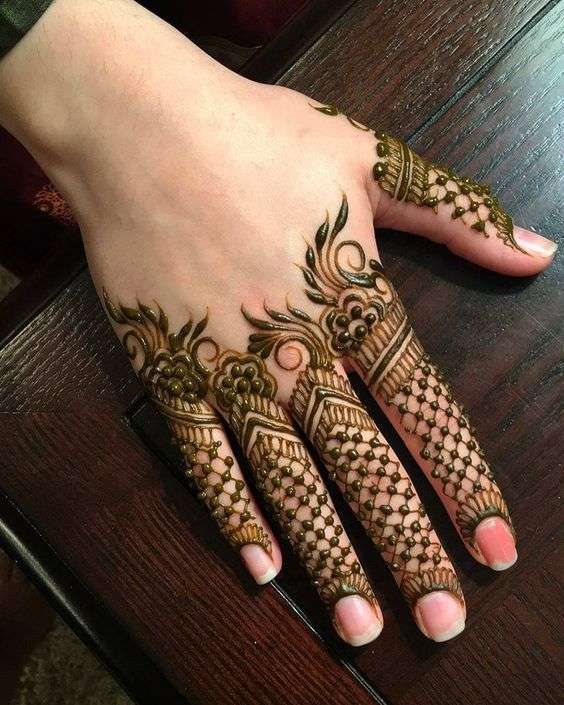- Back Mehendi designs


- Back Mehendi designs 2





- Back Mehendi designs 3









special occasions for Mehndi
Weddings and Engagements: Mehndi is an integral part of pre-wedding and engagement ceremonies in many cultures.
Eid Celebrations: Eid al-Fitr and Eid al-Adha are important religious celebrations in Islam.
Karva Chauth: Karva Chauth is a fasting ritual observed by married Hindu women for the well-being and longevity of their husbands.
Diwali (Deepavali): Diwali, the Festival of Lights, is another occasion where Mehndi is commonly applied by women and girls.
Baby Showers (Godh Bharai): In many cultures, especially in South Asia, applying Mehndi during a baby shower is a common practice. Mehndi Design
Festivals and Celebrations: Mehndi is often applied during other festivals and celebrations, such as Navratri, Teej, Raksha Bandhan, and traditional cultural events.
Bridal Showers and Hen Parties: In some modern contexts, applying Mehndi has become a part of bridal showers and hen parties as a way for the bride and her close friends to celebrate together before the wedding.
Cultural Events and Performances: Mehndi is also applied during cultural events, dance performances, and theatrical presentations to enhance the overall aesthetic and traditional feel of the event.








- FAQs
The mehndi stain will last for several days, and will eventually fade naturally. The length of time the stain lasts will vary depending on your skin type and how well you care for your mehndi design.
The cost of mehndi will vary depending on the size and complexity of the design, as well as the location where you get it applied. However, mehndi is generally a relatively inexpensive form of body art.
The mehndi stain will last for several days, and will eventually fade naturally. The length of time the stain lasts will vary depending on your skin type and how well you care for your mehndi design.






